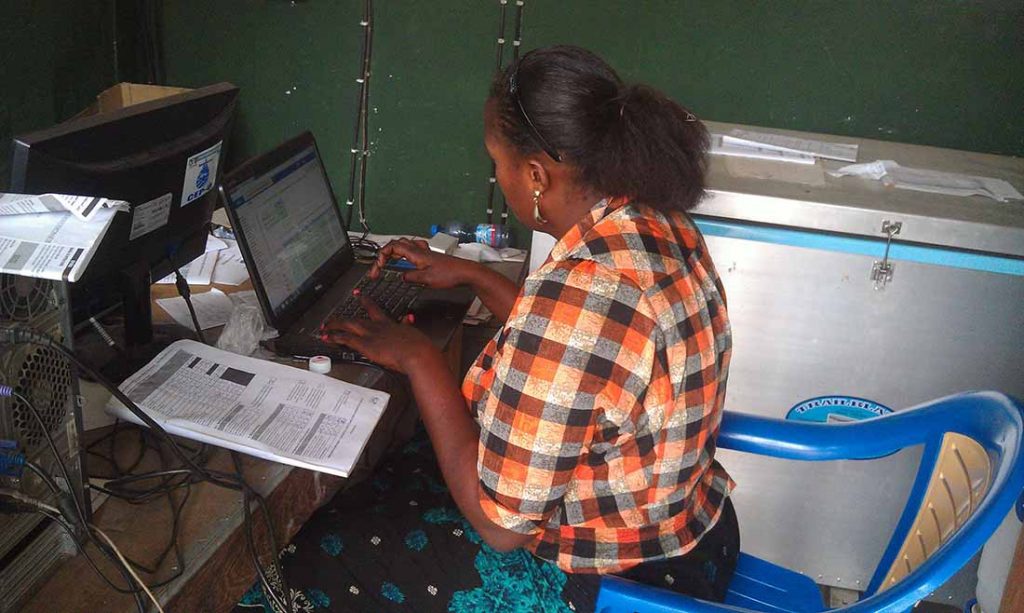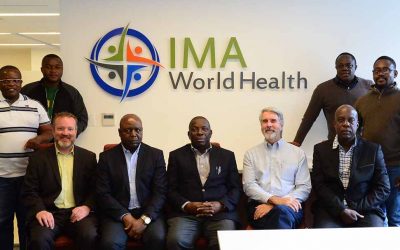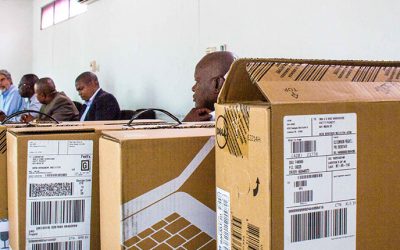ASSP Project Ensures Health Zones Stay Connected In DR Congo
Who knew that working with information management systems would require the skills of an anthropologist? In a country where internet connection is sporadic, IMA World Health Senior IT Engineer Siméon Avuta travels to the farthest reaches of this vast country to ensure that health zone teams are connected to the internet and to the health information management software DHIS2.
Written by Linda James
IMA World Health
Originally posted at www.imaworldhealth.org
District Health Information Software 2, or DHIS2, is a web-based open-source information software that provides the Ministry of Health, as well as IMA, a method to effectively manage and analyze data. That data improves health care exponentially by providing mobile tracking of pregnant mothers in rural communities, medical services availability in the health areas, and management of medication deliveries among other notifications.


Using technology to build capacity
Ensuring that this software system works requires a tremendous amount of behind-the-scenes work. Under normal circumstances, connecting to the internet would be as simple as linking to the telecommunications carrier in the area. The catch in the DRC is that most areas are not covered by a telephone data network. IMA’s solution included installing VSAT satellite dishes that transmit data to and from 52 health zones in Congo.
THAT is no small feat! IMA technical team member Carlos Nyembwe arrived in Mushenge, the capital of the Kuba Kingdom, in the Kasaï to install a VSAT system. Naturally, he was on a tight schedule and looking to do a quick turn around on the site survey installation. Technology and tradition came face-to-face when upon his arrival he learned that the Prince of the Kuba Kingdom had passed away and the funeral was taking place that day. As a result, all activity was forbidden and participation in the funeral rites was required. Carlos’ schedule went out the window as he prepared to honor the legacy of the Prince. Local customs take precedent.
Top left: The IMA team traveled along the Mweka/Bulape road in the province of Kasai on their way to complete their important work. (Photo by Carlos Nyembwe/IMA World Health)
Bottom left: A data manager works on data entry into DHIS2 in the Kanzala Health Zone in the province of Kasai. (Photo by Carlos Nyembwe/IMA World Health)
894 health centers are now submitting routine data through DHIS2 in ASSP’s assisted health zones. An average of 856 submit data on a monthly basis.
ROUTINE DATA
Real-time data sourced from the DHIS2 data management system on the number of children who completed the nutrition program in ASSP-assisted health areas from 2014 to 2018.
DHIS2
Learn more about how ASSP helped the MOH improve routine health data by implementing DHIS2 in its health zones and beyond.
read more about our work to Implement DHIS2
Publications
London School of Hygiene & Tropical Medicine Health Policy and Planning: How the introduction of a human resources information system helped the Democratic Republic of Congo to mobilise domestic resources for an improved health workforce (link)
ASSP Staff Enlisted To Aid In Response To Ebola Outbreak In DR Congo
An electronic database for Ebola Response Written by Linda JamesIMA World Health Four members of...
Creating a national health information system in DRC
IMA World Health has been working with the Ministry of Health in the Democratic Republic of Congo,...
IMA Supports Human Resources Development for the Health Sector in DRC
Yesterday IMA DRC’s ASSP Project took a giant step forward in honoring its commitment to support...



